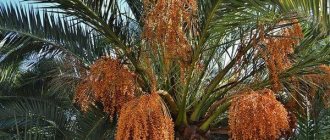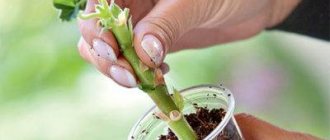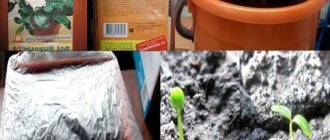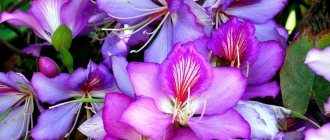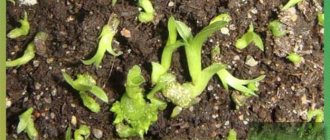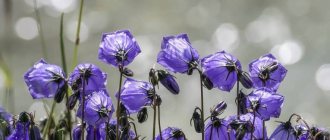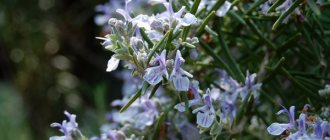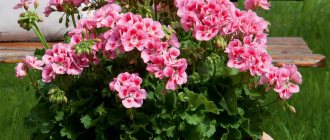Pelargonium from seeds at home grows quite quickly. The plant can be planted in open ground or left in the apartment. Its specific aroma helps reduce nervous tension, helps get rid of insomnia and eliminate headaches. Bright and juicy shades of buds always lift your spirits and fill you with vigor.
- 2 Optimal timing is better than planting
2.1 In different regions - 2.2 Best sowing dates according to the lunar calendar 2022
- 3.1 Is it worth planting pelargonium seeds by ordering them from Aliexpress?
Planting seeds is the best way to propagate pelargonium
Pelargonium is a perennial plant. The versatility of the flower is that, in addition to growing in protected soil conditions, it can become a wonderful decoration for a garden plot. The leaves of the plant are used in the production of essential oils and as a medicine in folk medicine.
Pelargonium seeds are elongated, large, brown in color
Planting pelargonium seeds is considered one of the best methods, because such seedlings are unpretentious, resistant to diseases and are always characterized by abundant flowering. In addition, the seeds germinate quickly even with a lack of sun. When cuttings, problems arise due to improper watering and unsuitable soil.
Third sowing: sowing pelargonium seeds in peat tablets
We sowed in peat tablets simultaneously with the second sowing in the ground, in March, more precisely on March 3rd. We can immediately say that when sowing pelargonium in peat tablets, nothing fundamentally changed.
We filled the peat tablets with water in advance. Once they reached their maximum size, we put 1 seed in each tablet and lightly sprinkled it with soil.
The tablets were placed in a cake pan, but you can use any other suitable container. The main thing is that it can be completely covered with film or glass.
Then, until the seedlings appeared, we gradually added water and ventilated the shelter.
When geranium sprouts with two cotyledons appeared, we transplanted them into small pots. Before replanting, we removed the protective film from the peat tablets.
We know that many people write that this is not necessary, but our experience suggests that this film still works as a growth inhibitor in the future. BUT! It is NOT necessary to remove it if the roots have grown deeply into it. It is for this reason that we transplanted our geranium seedlings at such an early stage of their life.
Then we proceeded in the same way as in the first option. After some time, there was no longer any difference between geranium plants sown in the ground and in peat tablets!
Optimal timing is better than planting
Pelargonium begins to bloom 3–4 months after planting the seeds. Experts recommend taking these terms into account to obtain flowering in a given period.
For those who want to please themselves with hanging varieties for the design of a summer terrace, it is better to have the seedlings ready in April. This means that pelargonium seeds should be planted in February - March.
The Early Generalist variety, sown in early March, will delight you with bright and abundant flowering in early May. Pelargonium Black Velvet should be planted 2-3 weeks earlier for these purposes.
When growing indoors, you can plant seeds all year round.
In different regions
- In the conditions of the northern region, where there is little sun and light, it is better to sow seeds at the end of April - May.
- In mid-latitudes, the optimal time for obtaining mature seedlings for planting in open ground is February - March.
- In the south, plants are brought to the terraces at the end of March, so the seeds need to be sown in December. By the beginning of spring, they will already be actively blooming and delighting with their beauty.
Best sowing dates according to the lunar calendar 2022
Pelargonium cannot be planted on the full and waning moon. The seedlings will be uneven, and the plants themselves will be weak, with a poorly developing root system. When picking seedlings or transplanting them into the ground, low survival rate is noted.
The most favorable dates in March are: 10, 11, 12, 15, 16, 23, 24, 28, 29. And it is better to dive seedlings on the 1st, 2nd, 15th, 16th, 19th, 20th, 22nd, 28th, 29th.
In April, it is recommended to sow pelargonium seeds: 7, 8, 11, 12, 18, 20, 21, 29, 30. You need to seat: 2, 3, 7, 8, 11, 12, 16,17.
Planting pelargonium seedlings in flower beds and containers
First autumn sowing of geraniums
It so happened in the end that we only had two seedlings left from the first sowing. We could have saved more, but we didn't bother too much. These two seedlings were planted in small pots in March. They bloomed in July, but not very much. These plants are still blooming, but they have practically not increased in growth or beauty.
1 photo taken on March 9 - transplanting into pots, 2 photos - June 7, 3 photos - July 18 - first flowering of pelargonium variety Apple Blossom
Second and third sowings of pelargonium
On the second May holidays, young geraniums were planted at the dacha: some got a flower garden, some got beautiful pots, and some got an old red bucket that no one needed). There were a lot of seedlings and space was also required.
Caring for them was simple: when planting, complex mineral fertilizer was added to the holes and it was added during the summer. Watering as needed, fertilizing as we remember... And in July we have a lot of blooming geraniums of all colors and shades. This geranium is still blooming to this day, even while the one that has not yet been taken from the dacha. Autumn is warm...
Decoration of the site with pelargoniums from Olga Petina and Yuri Petina), August 22
The most popular varieties with photos
The most popular types of pelargonium are zonal, ivy-leaved and fragrant. The plants are not particularly demanding on the composition of the soil, grow quickly, are unpretentious in fertilizing and are characterized by a long flowering period. Each species has the most popular varieties, which are presented in the photo below.
The Early Universal variety is the most common among amateur flower growers. The period from planting seeds to flowering is more than 2 months
Zonal species of pelargonium propagate well both by seeds and cuttings. They can be grown in containers, flower pots, and flowerpots. They are recommended for open and closed ground. The colors of the buds are rich and varied.
Colorama belongs to the zonal species of pelargonium. The bushes are low, with large flowers. The leaves have a characteristic dark horseshoe-shaped pattern.
It is preferable to grow colorama in pots, since with a compact root system, the green ground part is very fluffy and voluminous. In summer, it can be planted in open ground.
The variety Summer Rain belongs to the group of ivy-leaved or ampelous
Thin but strong shoots of pelargonium Summer Rain fall up to 100 cm. The leaves are smooth, dark green, and flowering is abundant. There are different shades. Indispensable for decorating balconies, gazebos, terraces.
The leaves of the Black Velvet variety differ from other varieties in their chocolate, almost black color. The inflorescences are bright, velvety
Young shoots and leaves are always light green, but after a few weeks they begin to darken. Most of the flowers on sale are red in color.
The Cabaret variety can be identified by its lush green leaves with wavy, ribbed edges. It does not exceed 30 cm in height. The yellow core is clearly visible at the base of each flower.
Pelargonium Cabaret has spherical flowers 10–12 cm in size. It is susceptible to direct sunlight and does not tolerate dry soil. It comes in colors from dark burgundy to snow-white.
The Orange Ice variety is characterized by a juicy red-orange color of the inflorescences and a pale yellow-green tint of foliage
During the flowering period, the Orange Ice bush reaches up to 35 cm in diameter. Suitable for both indoor and outdoor decor. It is unpretentious, grows quickly, and differs from other types in its early flowering.
The Violet Chandelier is a unique look with rich purple or blue buds
The Chandelier Violet variety is distinguished not only by its abundant, but also long flowering - from May to October. The leaves are small, with pointed edges, almost invisible under the buds.
Victoria is a tulip-shaped pelargonium variety from the latest series of selection. Popular due to the unusual structure of the buds
All tulip-shaped types of pelargonium are characterized by small but numerous inflorescences (up to 50 pieces), located on tall, strong stems. They grow up to 70 cm in height. They are easy to propagate, have a pronounced aroma, and bloom for 3–4 months in a row.
Is it worth planting pelargonium seeds by ordering them from Aliexpress?
Most customer reviews about purchasing pelargonium seeds from Aliexpress are negative. Only a few confirm that the seeds really germinate well and the flower grows as stated in the description on the pack.
More than 80% of sellers send seeds of the wrong variety or of poor quality with almost zero germination. Therefore, to prevent such risks, it is still worth abandoning Chinese seeds and spending a little more money on a quality product from a domestic manufacturer.
Pelargonium care features
Pelargonium is one of the most unpretentious flowers. Without much difficulty, you can grow lush seedlings and provide them with abundant flowering. But, if you try and pay a little more attention to geranium plants, you can achieve flowering throughout the year.
This is interesting: a characteristic feature of many types of pelargonium is resistance to drought and high vitality. There is a known case when dried pelargonium, which had been in a herbarium for more than six months, formed roots in a humid environment and began to grow.
The rules for proper maintenance of pelargonium are simple. They include:
- watering;
- control of external factors;
- pruning;
- feeding;
- protection from diseases and pests.
Watering
Like absolutely all plants, geranium needs water. You don’t have to spray the bushes or monitor air humidity, but the flow of moisture to the roots should be constant. The main thing in the matter of watering is to observe the chain of command and not to overwater the plant. Geranium simply will not survive life in an overly humid environment, since its root system is quickly affected by mold and other dangerous fungal diseases, especially in winter. In general, geraniums can be classified as drought-resistant crops, but this does not mean that geraniums can be kept under constant stress due to lack of water. It is worth understanding that the less water the plant gets, the weaker its flowering will be, and the flowers will be crushed. Based on all that has been said, the watering regime is built according to the scheme - once every 4-5 days.
Fact: if rot begins to spread on the plant, then, unfortunately, it will no longer be possible to save the plant.
External factors
Geranium is an ideal indoor flower. The plant feels great at room temperature +20-25 degrees, and in winter it can live even in cooler conditions. The only condition is less drafts.
During the winter months, being dormant, the plant feels comfortable at temperatures below 14 degrees. It is best to place a tired plant in a room where the temperature is only 6-8 degrees. And if a flowering geranium is kept at a minimum temperature for several days, it will stop blooming.
Fact: geranium experiences discomfort near a radiator and other heat sources.
You don’t have to be an experienced gardener to know: all flowers are light-loving. Pelargonium is no exception. It is best to arrange a flower garden on a windowsill, so that the flowers are constantly illuminated. But the lack of light will quickly affect the quality of flowering: the buds will form small and dull. And in case of critical lack of light, pelargonium can shed its leaves.
The abundance of light saturates the leaves with juice and color. The plant looks (and grows) healthy, blooms profusely and exudes the strong aroma characteristic of this flower.
Advice: many gardeners are confident that you can safely keep pelargonium in the sun without fear of consequences. And there really won't be any. The main thing is to regularly turn the pot so that the plant is formed on all sides.
You need to take a small pot. Geraniums don’t need a lot of soil. The faster the roots entwine a clod of earth, the faster the plant will bloom, and the smaller the pot, the more abundant the flowering will be. In large pots, the plant may not bloom at all, it doesn’t need it - life is already good, why bother? You can even plant several cuttings in one pot.
Trimming
After flowering, the plant is pruned. First of all, cuttings are cut from the bush for subsequent propagation, and all faded areas are removed. The branches must be trimmed mercilessly, leaving stumps 5-7 centimeters long. Soon they will begin to grow thickly with young shoots. The shorter the pruning, the lower the crown of the bush and good branching will be formed.
Please note: fresh cuts must be treated with a fungicide and sprinkled with charcoal to prevent the plant from being affected by the fungus.
In order to form a low-growing lush bush, it is better to prune in the spring, after wintering, while the plant is still dormant. During this period, stronger and healthier shoots are formed. Pruning in spring involves removing weak branches and shortening those that are too elongated. You cannot cut everything aimlessly: several buds should remain on the trimmed branches.
Tip: pinch the stem after the sixth leaf appears and you will get a lush compact bush.
Pest and disease control
If geraniums are properly cared for, the flower can live a long life without disease. However, sometimes the leaves and roots can be affected by illnesses, so you should know the action plan if suddenly a problem occurs and the geranium is on the verge of death.
Like the vast majority of plants, pelargonium gets sick when it is in constant shade, the soil in which it grows is too waterlogged. As a result, humidity and elevated temperature do their job - the flower is affected by the fungus. The main diseases of pelargonium: gray rot, leaf rust, powdery mildew, nematode.
The plant is most often affected by gray rot in winter, when it is easiest to flood the flower and cool it on the windowsill. To avoid this insidious disease, you should properly water and ventilate, because a lack of fresh air leads to oxygen starvation of the roots and, in general, the entire structural system of the flower.
Often yellow small spots appear on flower leaves. Such damage to the leaf blade indicates the development of another insidious disease - leaf rust. This disease develops due to improper care of the plant.
To prevent fungal diseases from becoming constant companions of the flower, the plant is regularly treated with fungicides (for example, Topaz, Topsin, Skor) and the basic rules of caring for a delicate flower are followed.
Various small insects often settle on geraniums, which spoil the appearance of the plant and gradually suck out all the vital juices and the geranium withers. The main pests of pelargonium:
- Whitefly - feeds on plant juices and is localized at the bottom of the stem;
- Aphid - attacks leaves, multiplies quickly;
- Thrips, mites, mealyworms - appear on all parts of the plant.
It is important to regularly inspect the bushes for the presence of parasites. If they appear, only treating the flower with an insecticidal preparation can save the situation.
Feeding rules
Fertilizers for pelargonium are needed only in the spring and summer, during the flowering period. In winter, all feeding is excluded, as the plant is resting. Fertilizing is applied 2 times a month, combining them with watering.
Tip: Do not apply fertilizer to the flower if it is in direct sunlight. First, shade it and water it. And only then start feeding.
For a full life of pelargonium, four main elements are needed:
- nitrogen;
- potassium;
- phosphorus;
- iodine.
All these elements can be added as a single component, but it is best to create cocktails from several microelements at once.
To grow a lush green crown - stem, leaves, roots - the bush initially needs nitrogen. It is brought into the ground in the first months of spring. If the plant does not have enough nitrogen, it will grow very slowly, and the green color will become faded.
Nitrogen is contained in organic compounds, which are applied to pelargonium with extreme caution, as it can harm the plant. For flowering, it is good to water the geranium with a solution of bird droppings or cow manure (you can only use old manure).
Advice: if you choose between chicken manure and mullein, it is better to give preference to the second option - its composition is less aggressive.
When the buds open, it is the turn of another element - potassium. Now he is the main builder of pelargonium, or rather the creator of flowers. And phosphorus will stimulate the strength of leaves and stems.
A plant spends a colossal amount of energy on flowering. To replenish it, the tired flower system needs to be nourished with multivitamins, which include various minerals, such as iron, sulfur, manganese, boron, magnesium, copper, zinc, calcium. If you provide the geranium with everything it needs, then all the plant systems will work properly for several months and delight the owner with the buds opening again and again.
Important! Iodine is one of the most necessary elements for the lush flowering of pelargonium.
Gardeners often add a solution of iodine and hydrogen peroxide to the soil to stimulate the formation of many flowers. It is very simple to prepare this fertilizer, and the effect can be noticed after 2-3 procedures.
Technique for applying iodine supplement:
- The soil is well moistened.
- Make a solution of 1 drop of iodine, 1 liter of water and 1 milliliter of hydrogen peroxide.
- Water the soil near the walls of the pot with the solution, avoiding liquid getting on the leaves or trunk.
- Fertilizer consumption – 50 grams at a time.
- After 3-4 weeks the procedure can be repeated.
- Carry out the procedure before abundant flowering begins.
- It is not recommended to use this fertilizer frequently, as the concentrate can burn the roots of the flower.
By the way, for a lush color, you can add B vitamins to the fertilizing composition - B1, B6, B12, which can be bought at the pharmacy.
Landing instructions
The ideal soil for planting pelargonium is a soil that contains 2 parts each of river sand and peat and two parts turf soil. You can purchase ready-made soil specifically for pelargonium. It is not recommended to add fertilizer - the flower does not like it. The most suitable containers are peat or plastic cups.
Step by step instructions:
- The cups are filled with earth.
- Then it is watered with warm water.
- Seeds are placed in 2–3 pieces. into each container.
- They can be sprinkled with 1 cm of soil or lightly pressed into the soil.
- Cover with cling film, not forgetting the holes.
Seeds begin to germinate at a temperature of 20–22°C after 2–3 weeks. In rare cases, a month passes before the first shoots appear.
How to sow pelargonium seeds correctly
To successfully grow garden perennial geranium from seeds, you need to know the sowing procedure. Our step-by-step instructions with photos and videos will help you prepare for sowing and sow the seeds correctly.
Seed preparation
Today, coated or scarified seeds are quite often sold, already prepared for sowing. They do not need to be processed before planting. Before sowing, ordinary seeds can be soaked for a day in warm water or the planting material can be disinfected at the same time as soaking. To do this, soak it for half an hour in a solution of potassium permanganate, a 3% solution of hydrogen peroxide or a solution of Fitosporin.
Soil preparation
As with any seedlings, the soil must be nutritious and loose. It can be prepared from peat, turf soil and sand (1:2:1). A week before use, such soil must be spilled with boiling water or disinfected with a solution of potassium permanganate (can be heated in the oven).
The easiest way is to buy a soil mixture in the store, choosing soil for seedlings or special soil for geraniums.
Selection of containers
A large number of pelargonium seeds are sown in a low box or container. In the future, the seedlings will need to be pruned.
To avoid picking, individual pots or disposable cups about 5-6 cm high are selected. This could be a yogurt cup. We do not recommend sowing directly into taller glasses (for example, disposable plastic glasses 10 cm high). The fact is that geranium seedlings are very small (see photo below). In a large volume of soil for them, they will grow roots for a long time, and, therefore, grow. And it is very easy to accidentally flood or dry out such small shoots. It is easier to monitor soil moisture in low containers. And when the seedlings grow up, transplant them into a larger glass.
Attention! Drainage holes must be made at the bottom of containers or cups.
Sowing procedure
Geranium seeds are placed in the soil to a depth of 0.5 cm. In a box or container, holes for seeds are made with a distance of 3-4 cm. You can not make grooves, but lay them on top of the soil and sprinkle with earth.
You will be interested to know: Growing balsam from seeds at home: when and how to plant seedlings, photo
It is recommended to sow 2-3 seeds in an individual pot. If all of them sprout, the strongest grown seedling is left, and the rest are pinched (not pulled out).
The seeds are sprinkled with soil mixture, sprayed with warm water from a spray bottle and covered with film. Seedling containers with crops are placed in a warm, dark place (possibly under a radiator) before emergence.
Every day the shelter must be removed, ventilating the ground for a few minutes. If the top layer of soil has dried out, moisten it with a sprayer using lukewarm water.
In about one to two weeks, seedlings should appear. Seedling containers are immediately placed on the brightest windowsill. In spring, you need to choose a bright place without direct sunlight.
For a better understanding, watch a video from the YouTube channel about the pre-sowing treatment of geranium (pelargonium) seeds in Fitosporin and sowing them for seedlings in plastic cassettes.
How to care for seedlings
When two or three leaves appear on the seedlings, the film cover is removed and the seedlings are transferred to lighted windowsills. It is necessary to regularly loosen the soil and water, avoiding moisture getting on the leaves. Seedlings are picked when 4–5 branches form on the main stem.
After the plants have taken root and the 6th–7th leaf appears, it needs to be pinched. This way a branched, lush bush will grow and it will bloom profusely.
If germination is poor, the plant can be fed with a special liquid fertilizer for flower seedlings or a growth stimulator. The containers can be placed under the phytolamp. It is important to avoid direct sunlight on the plants - this will help prevent burns on already grown seedlings.
Planting in open ground
When warm weather sets in and the threat of night frosts has passed, pelargonium can be planted in a flowerbed in open ground or transplanted into larger pots.
Choose a site for geraniums that is well lit, with light shading.
The flowerbed is prepared in advance. In the fall, when digging, mineral fertilizers and humus are added to it. Clay soil is diluted with sand or peat.
How to properly plant geranium seedlings in open ground:
- The distance between plants should be from 40 to 60 cm.
- The holes are made so that they are 5-7 cm wider and deeper than the pot in which the flowers grow.
- The bushes are carefully removed from the containers and placed in a hole.
- The roots are covered with prepared nutritious soil and watered abundantly. If the soil settles after watering, you need to add a little more soil on top.
For the first few days, for better adaptation, it is recommended to cover the planting with lutrasil or other covering material.
Caring for pelargonium in the garden is a pleasure. The main thing is to water the flowers in a timely manner, not allowing the soil to dry out, and to feed them with mineral fertilizers several times during the season. To ensure lush and continuous flowering, do not forget to regularly pick off wilted flowers.
When to pluck geraniums after germination + video
Geranium or pelargonium will delight the eye in the cold season on the windowsill, and in the summer - in the flowerbed. This flower is distinguished by bright flower caps that cover almost the entire bush. Therefore, most housewives love geranium very much and are glad to have it in their home. To do this, you need not only to be able to care for it, but also to know the secrets of geranium propagation, so that if the plant dies, the window sills will not be left empty. You can grow geranium using cuttings and seeds. Recently, more and more flower lovers are choosing the second method, since such a plant takes on the appearance of a neat small bush with a large number of flowers. Therefore, we will discuss how to grow geranium yourself using seeds.
Seed preparation
Usually, seeds are not subjected to any pre-treatment before planting. The only rule is that they must be stored in a dry, dark place in an airtight container so that pests do not have access.
In exceptional cases, you can treat it with a special solution with a growth stimulator, then leave it in clean water for a couple of days. Thanks to this procedure, the seeds will germinate much more efficiently and quickly.
Seeds obtained independently should be processed in a certain way. First you need to sand the top rough layer of seeds, then treat them with a growth stimulator and leave them in water for a couple of days to soak. But it should be understood that homemade seeds are unlikely to produce good seedlings, since with this type of propagation, modified species of pelargonium lose their maternal genes.
Popular varieties of geraniums
There are several of the most popular varieties, which have significant differences among themselves. To understand the difference between them, you need to understand what plants from different species groups look like.
There are six main groups of pelargoniums:
- zonal;
- royal;
- ivy-leaved or ampelous;
- unique;
- angels;
- fragrant.
Pros and cons of propagating geraniums by seed
This method of reproduction has one significant disadvantage. Planting by seed does not guarantee the preservation of the parental qualities of geranium, which makes it almost impossible to achieve the transfer of varietal characteristics.
We recommend reading these articles:
Treatment of shrubs in the spring from pests and diseases
Treatment of cherries in the spring from pests and diseases
Planting fruit trees and shrubs on the site in spring
But there are also advantages to propagating geraniums by seeds:
- simplicity and ease;
- seed material has a long shelf life;
- self-collected seeds will not be infected with diseases;
- sowing is carried out at the end of winter or beginning of spring (by mid-summer the plant will begin to bloom).
What kind of seeds should there be?
One way to grow geranium indoors is by planting seeds. They should be brown, dense, oblong in shape. It is better to purchase seed material in specialized gardening stores. Only in this case can we expect that the flower will grow in the desired shade, be beautiful and durable.
When purchasing seeds, you should pay attention to the plant variety, since this determines how to care for the flower, the frequency of watering, the required microclimate, as well as the color and size of the plant.
There are more than 250 varieties of this crop, so it’s quite easy to choose the one you like. Pelargonium comes in two types: flowering and fragrant. For growing indoors, white, red and fragrant geraniums are often chosen. How to properly grow pelargonium from seeds? This will be discussed further.
Choosing soil for growing pelargonium from seeds
Geranium prefers a light nutrient mixture that allows water and air to pass well to the roots of the plant. To germinate seeds, you can use ready-made store-bought soil or make it yourself. There are several options:
• mix peat, sand, humus and compost in equal proportions;
• connect two parts of garden soil with one part of peat and sand;
• dilute peat with perlite in a 1:1 ratio.
If it is possible to prepare the growing substrate yourself, then you should take advantage of it. In purchased soil, seedlings appear later, seedlings are weaker, the bush forms thin stems, and flowering is sparse.
Before sowing the seeds, the prepared substrate must be disinfected to avoid further infection of the flower. To do this, fry it for several minutes in the oven.
Advice! To treat the soil, you can use ready-made high-quality fungicides or manganese. But planting should be postponed for a day.
The most favorable time for sowing seeds is February or March. If you sow pelargonium later, the plant becomes very elongated and blooms only after 9 months.


